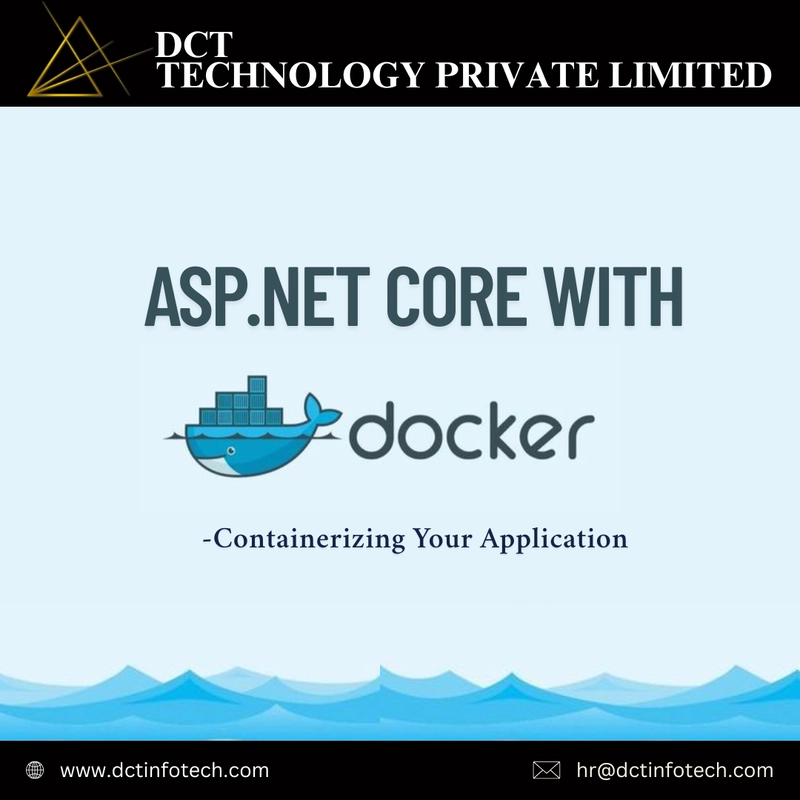Ever deployed your ASP.NET Core application and felt like you're juggling fire with outdated servers, complex configurations, or a "but it works on my machine" moment?
Let’s change that. It’s 2025. If your .NET app isn’t containerized, you’re leaving performance, security, and scalability on the table.
In this post, I’m diving into how you can containerize your ASP.NET Core application using Docker—with real examples, practical code snippets, and helpful resources to get you up and running fast.
💡 Why Docker with ASP.NET Core?
Before jumping in, let’s answer the why:
- Portability: Deploy anywhere Docker is supported.
- Consistency: Eliminate "works on my machine" issues.
- Efficiency: Light-weight, fast-starting containers.
- Scalability: Ready for microservices and Kubernetes.
🔧 Step-by-Step: Containerizing Your ASP.NET Core App
Let’s get practical. Here’s how you can do it:
1. Create a New ASP.NET Core Web API Project
dotnet new webapi -n MyDockerApp
cd MyDockerApp
Now, run the app to verify it works:
dotnet run
You should see the app running at https://localhost:5001.
2. Add a Dockerfile to Your Project
Create a Dockerfile in the root of your project folder:
# Use the official .NET SDK image for build environment
FROM mcr.microsoft.com/dotnet/sdk:8.0 AS build
WORKDIR /src
# Copy everything and build
COPY . ./
RUN dotnet restore
RUN dotnet publish -c Release -o /app/publish
# Use runtime image
FROM mcr.microsoft.com/dotnet/aspnet:8.0
WORKDIR /app
COPY --from=build /app/publish .
ENTRYPOINT ["dotnet", "MyDockerApp.dll"]
3. Add a .dockerignore File
This avoids copying unnecessary files into the container.
bin/
obj/
*.user
*.suo
4. Build and Run the Docker Container
docker build -t mydockerapp .
docker run -d -p 8080:80 mydockerapp
Now go to http://localhost:8080 and see your app running inside a container!
🔍 Debugging & Developing With Docker
Want to develop and debug inside the container like a pro?
Check out this amazing guide by Microsoft:
👉 Container Tools in Visual Studio
Also explore:
👉 Dockerize an ASP.NET Core Application - Official Docs
🚫 Common Pitfalls & Fixes
Here are some quick gotchas you might run into:
"Ports not working?" Make sure your app is listening on
http://0.0.0.0, notlocalhost."Docker build is slow?" Optimize Docker layers by ordering commands smartly and using
.dockerignore."App crashes in container?" Run the container interactively using
docker run -itto inspect logs.
✅ Pro Tips to Level Up
Use multi-stage builds (we already did!) to keep your image lightweight.
Add a health check endpoint for production-ready containers.
Connect to Docker Compose for databases, caches, or microservices.
Use environment variables and volumes for configuration and persistence.
🌐 Bonus: Going to Production? Read This
Before you deploy to the cloud, bookmark this gem:
👉 Production best practices for Docker containers
It covers:
- Logging and monitoring
- Security tips
- Image size optimization
- Secrets management
💬 Let’s Talk
Have you containerized your .NET apps yet? Are you using Docker in production or just testing the waters?
👉 Drop your thoughts, share your setup, or ask questions in the comments.
Let’s grow and learn together. I reply to everyone!
👉 Follow DCT Technology for more web dev, design, SEO & IT consulting tips every week!





Top comments (0)